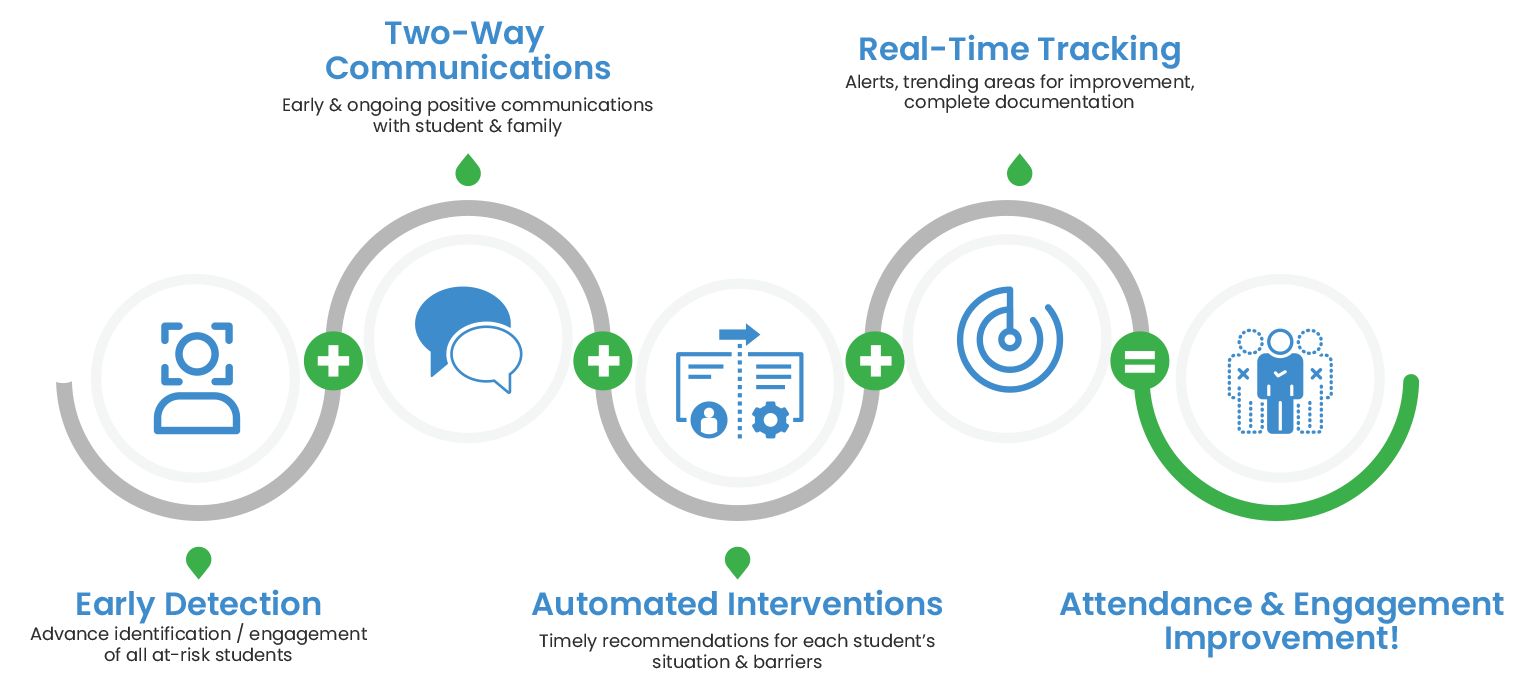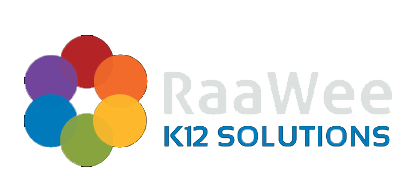
View from the District Office
Few have a better finger on the pulse of student attendance patterns than District Office Student Support Service Directors. Jose Almazan from United ISD in Laredo, Texas, Dr. Tracy Piper from Hemet Unified in California, and Dr.Chaunice Powell from East Side Union High School District in San Jose California all shared their projections, insights, and proposed interventions with RaaWee.
Constantly contending with the misinformation proliferating on social media is something that Jose Almazan didn’t initially realize would become a full-time job. Combating the stigma that it’s not safe to return, counteracting the myths about the vaccine’s efficacy, or working against inertia and complacency are uphill battles he’s ready for. He believes that the district must do their best to counter-message the rumors and instill the emotional security that schools are the safest and most structured environments for students to be in. Almazan stated, “We need to realize that we are not in the same people or in the same place as when we left. We need to look forward, and not past.” Professional development is also needed for teachers and support staff to address the stressors and shift the negatives to the positives. Sports, counseling, clubs, and school activities can all be leveraged to re-engage and re-socialize students in school culture.
Dr. Tracy Piper echoes Jose’s concerns and adds a few of her own. She fears that a group of previously engaged students have become permanently disengaged over the past year and will eventually drop out. “If we don’t maintain flexible options via hybrid or online offerings, we will lose them. Especially kids who don’t fit in for myriad reasons and have found a home online where they can be themselves and not worry about being picked on or harassed for their differences.” She claims that this is our opportunity to change our perspectives of what a school day is. Flexible scheduling is key to solving attendance issues.
There is no reason to miss school even if a student is sick if they can log in from
home to participate in instruction. RaaWee has been at the forefront of recognizing and validating different modes of instruction and, as a result, have built into their platform ways to track and report attendance in multiple modalities.
Caregivers have been flooding Dr. Chaunice Powell’s office with requests
for support disclosing that their kids are refusing to go back and that they
don’t know how to handle it. She says that attendance has actually increased from 94% pre-pandemic to over 97% during distance learning: “There are a whole different group of students that this model is working for and we don’t
know if they will come back. The complete shift in routine plus the emotional
shift to having to deal with face-to-face relationships can be anxiety-provoking.” To help with the transitions, East Side has started doing site tours with incoming 9th & 10th graders to build connections to the campus, familiarize them with the staff, and foster peer connections. Making personalized phone calls to those they perceive might be at risk is another avenue to invite
students back in. One way she sees RaaWee as a support is to have them blend
the chronic absentee and truancy lists to make one concise contact to families
in need as well as continue to offer additional Tier One supports for all
students.
Superintendents like Dr. Daryl Camp of the San Lorenzo Unified School District in the San Francisco Bay Area are doing the yeoman’s work of balancing fluctuating mandates coming down from the state and federal governments, being responsive to local politics and culture, negotiating with employee bargaining associations, and creating plans A, B, C through Z, to prepare for their students’ return. Dr. Camp states that the key to success is remaining flexible. The world has changed dramatically and, “Educators need to be sensitive to and reflective on the lessons we’ve learned during the pandemic. We know that students have taken on part-time jobs and other responsibilities that we should take into consideration when creating master schedules. If we want to retain our older students, our attendance system has to adjust to their emerging realities.” He also proposed rethinking our concepts of accelerated learning via competency-based achievement instead of logging “seat time”. We have opportunities here that we can leverage like no other time in history, due to a year’s worth of technology-based learning and distance learning experiences.
Fiscal Implications
The nuances and structures for funding public education are complex, but can
be primarily boiled down to ADA or Average Daily Attendance. All over the nation, districts and schools receive a majority of their funding based on formulas for positive student attendance. The higher the ADA, the more money they get. As
we exit a year of pandemic-related triage, it remains to be seen whether the
former models of attendance tracking and data collection will persist or
necessarily evolve to meet our diversified needs. The Federal and most state
governments already recognize these changes and have instituted temporary “Loss of Learning” funding initiatives to get schools back up and running. What will be in place for the long term, remains to be seen.
Regardless of whether we call it “Loss of Learning” or prefer to frame it more
affirmatively, any requisite funding initiatives around curriculum adjustments,
revisions and technologies will be ineffectual if students fail to attend school
regularly. Hence, RaaWee helps schools to ensure their Loss of Learning Initiatives become successful by helping them to keep students engaged in their schoolwork. In a recent blog post, Chang & Jordan underscore that point:
The stimulus bill just approved by Congress requires states to spend money on summer learning and extended school day programs, among other approaches. But
students won’t benefit from these programs—or the tutoring initiatives launching
around the country—if the students don’t show up in the first place. Reducing
chronic absenteeism, which has spiraled during the current crisis, must be an
essential part of recovery efforts…Given the magnitude of the problem, districts and schools can’t solve this on a case-by-case basis. Instead they need to invest in broad strategies that work at scale to help students overcome barriers to attending class and re-engage with learning (March 18, 2021).
RaaWee has just the solutions to help districts help staff to help students and
families systematically and compassionately, including:

Designating the earliest identification and interventions for students as the most important success point.

Valuing collaboration among stakeholders as the pathway to higher success,
which is the core of the TDPS.

The research-proven practice that prevention and intervention goals can be accomplished by building two-way communications with students and families.

By making the administrative aspects of intervention easy to manage, it leaves
all stakeholders more time for personal interaction with the students that
need it

Knowing that time is of the essence. Real-time updates ensure that all caregivers and educators have the most current information on any and all
students.
RaaWee’s Core Support Structure

Conclusion
RaaWee K12 Solutions celebrates the resilience and commitment of educators,
especially during the last twelve months. Looking back, we didn’t know what we
didn’t know, but banded together to find the tools, resources, and strategies to
support staff, children, and families all over the state. As so many districts are
moving back into school site operations and in-person learning, we realize that
there are still many unknowns as to what the future holds.
But we do know that our students are truly fortunate to have you on their side, creating innovative environments, growth opportunities, and providing engaging 21st century learning activities on a daily basis. Educators are optimists. We couldn’t do the tireless, rewarding, yet often heart-breaking work we do otherwise. The light at the end of this tunnel is beckoning. Let’s keep heading toward it together…
But we do know that our students are truly fortunate to have you on their side, creating innovative environments, growth opportunities, and providing engaging 21st century learning activities on a daily basis. Educators are optimists. We couldn’t do the tireless, rewarding, yet often heart-breaking work we do otherwise. The light at the end of this tunnel is beckoning. Let’s keep heading toward it together…
Citations
Chang, H. & Jordan, P. (March 18, 2021) How Covid Relief Dollars Can Help
Improve Attendance. Blog post originally published on the FutureEd website.
Lally, Phillippa & Jaarsveld, Cornelia & Potts, Henry & Wardle, Jane. (2010). How are habits formed: Modeling habit formation in the real world. European Journal of Social Psychology. 40. 10.1002/ejsp.674.
Liu, J., & Loeb, S. (2019). Engaging Teachers: Measuring the Impact of Teachers on Student Attendance in Secondary School (EdWorkingPaper No.19-01). Retrieved from Annenberg Institute at Brown University: http://annenberg.brown.edu/ai19-01
Olneck-Brown, Benjamin (March 15, 2021). Public Education’s Response to the Coronavirus (COVID-19) Pandemic. National Conference of State Legislatures.
Rogers, T. & Feller, A. (2018). Reducing student absences at scale by targeting parents’ misbeliefs. Nature Human Behaviour.
Whitney, Camille.R., and Jing Liu. (2017) “What we’re missing: A descriptive analysis of part day absenteeism in secondary school.” AERA Open 3, no. 2: 2332858417703660.
Lally, Phillippa & Jaarsveld, Cornelia & Potts, Henry & Wardle, Jane. (2010). How are habits formed: Modeling habit formation in the real world. European Journal of Social Psychology. 40. 10.1002/ejsp.674.
Liu, J., & Loeb, S. (2019). Engaging Teachers: Measuring the Impact of Teachers on Student Attendance in Secondary School (EdWorkingPaper No.19-01). Retrieved from Annenberg Institute at Brown University: http://annenberg.brown.edu/ai19-01
Olneck-Brown, Benjamin (March 15, 2021). Public Education’s Response to the Coronavirus (COVID-19) Pandemic. National Conference of State Legislatures.
Rogers, T. & Feller, A. (2018). Reducing student absences at scale by targeting parents’ misbeliefs. Nature Human Behaviour.
Whitney, Camille.R., and Jing Liu. (2017) “What we’re missing: A descriptive analysis of part day absenteeism in secondary school.” AERA Open 3, no. 2: 2332858417703660.
Trusted by Thousands of Schools Across the Nation
Trusted by Thousands of Schools Across the Nation





















